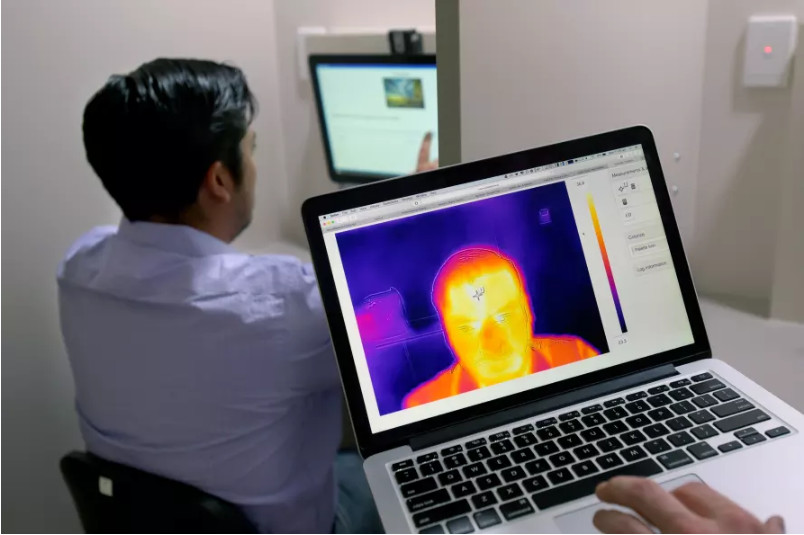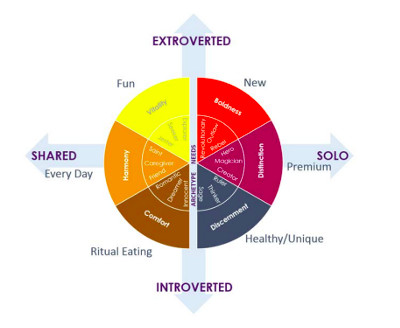
Sciences & Technology
So you think you know chocolate?

Although chocolate is a treat for all five senses – sight, hearing, smell, touch and taste– new research shows packaging is often just as important as what’s inside
Published 19 December 2022
Chocolate is the most popular confectionery product in the world and, for many of us, the sensory experience of chocolate has an immediate impact on our mood.
Research shows that the main reasons people choose chocolate are for emotional satisfaction and a sense of indulgence. Many people report that the primary factor they consider when deciding which type to purchase is the taste and flavour.

But before they can taste it, the only impression anyone has of any product is its packaging – so it follows that the pleasure of eating chocolate begins the moment we see it.

Sciences & Technology
So you think you know chocolate?
Our research looks at the relationship between our enjoyment of food products, our decisions to purchase them and what drives these choices.
By using biometrics – including skin temperature, facial micro-expressions and heart rate – we can look beyond someone’s conscious response to understand the emotional attachment to food, and specifically what makes one kind of chocolate better than another – and why.
When we first open a chocolate bar, the confectionary stimulates our sense of smell. Our olfactory receptors detect microscopic particles of chocolate in the air, sending signals to areas of the brain that detect aromas.
Then we unconsciously start salivating.
Once in the mouth, these aromas work with taste buds to detect the five basic tastes; sweet, sour, salty, bitter and umami to create our perception of flavour.

Although people generally associate chocolate with simple joy, there’s actually a lot of work that goes into developing a chocolate product – and its wrapper – to ensure that a chocolate lover’s expectations are met.
Currently, around 70 to 80 per cent of food products fail in the market – regardless of the traditional product testing prior to market introduction.
These studies provide useful information on how consumers consciously respond to products using traditional hedonic responses – measuring a person’s liking and preference of a product – but are limited on scientific data like unconscious and emotional cues.
And it’s these responses that have a major impact on our experience and whether we will buy the same product again. This is the holy grail for any successful product.
Previous studies show that around seven per cent of the testing response is delivered by spoken word, 38 per cent by voice intonation and about 55 per cent through facial expressions.
In order to dig deeper, our research at the University of Melbourne’s Sensory Lab measured biometric responses like skin temperature, facial micro-expressions and heart rate to develop machine-learning models and an evidence-based understanding of how people respond emotionally to both chocolate and its packaging – consciously and unconsciously.

We chose to measure emotions because they are considered better predictors of food choice than using ‘liking scores’ alone.
But the selection of emotions for chocolate differs between demographics. The are dependent on culture and gender, as well as different emotions that are evoked by milk and dark chocolate.

Sciences & Technology
Measuring deliciousness
So we developed a lexicon for chocolate across Western and Asian consumers that contained positive, negative, and neutral emotions. Study participants could select all the applicable emotions when they consumed chocolate or looked at the packaging.
Previous studies developed the five basic tastes of chocolate (salt, sour, sweet, bitter and umami), and different flavours (caramel, cinnamon chai, mandarin, strawberry, and peppermint), which were used as the criteria for participants to determine their sensory responses.
The skin temperature of study participants was established by analysing their infrared images. We were also able to measure eight emotions – happy, sad, angry, surprised, scared, disgusted, contempt and neutral – as well as head orientation and gaze direction.
Heart rate was captured as beats per minute (BPM) and is defined as the number of heartbeats within a given time interval. This method is used in medical applications as well as user authentication for biometrics.
Eye-tracking was used to record eye movements to understand how people process visual information on a computer screen. This is used in combination with an infrared camera to record pupil and corneal reflection.

Our seventy-five participants (aged 25 to 55 years old, 59 per cent female) were asked to evaluate chocolates under three conditions: a blind taste test of chocolate; looking at the packaging only, and tasting the chocolate while also looking at the packaging.

Health & Medicine
False labelling hides the truth about superfoods
The same chocolate was wrapped in six different packaging designs (see Figure 1), and at each step, participants were asked to associate the samples with a list of emotion-based words like ‘happy’, ‘calm’, ‘luxury’ and ‘healthy’.
We found that the packaging of the chocolate had a huge effect on how much people liked the chocolate within it. When each bar contained exactly the same chocolate, people showed an equivalent emotional connection to the packaging as they did to the taste of the chocolate.
Specifically, the amount people liked the taste of the chocolate was affected by their expectations based on the different wrapper designs. This was especially true when expectations created by the packaging were not met.
Participants selected stronger emotional words to describe the packaging than they did when blindly tasting the chocolate, with the ‘premium’ gold package having the highest expectations when it came to the taste of the chocolate.
This is potentially a good tip when buying chocolate as a gift this holiday season as the recipient is likely to think the chocolate is higher quality based purely on the impression of the wrapping.

Another of our studies found that people tend to not only like familiar (or existing) packaging, but also focus more on areas of interest of the labels, including brand name, logo, and image.
However, people didn’t associate novel packages (Figure 1) with any emotions.

Health & Medicine
How to avoid food poisoning this festive season
Sixty panellists took part in this study and each packaging concept (both novel and familiar) was displayed for a total of 10 seconds. This meant we could assess the emotional response in the videos and then analyse that to obtain facial expressions.
We used the TNS NeedScope™ (see Figure 2) – a research system designed to understand the emotional response to a particular brand.
The framework is made up of six segments (fun, new, premium, healthy, ritual eating, and everyday) based on universal human emotions and is a foundation for understanding needs across cultures and markets.
Familiar packages were presented to a focus group, based on where brands were positioned to represent the six segments of the TNS NeedScope model.
Associations for familiar (existing) brands were represented as: Bold for Ferrero Rocher, Fun for Cadbury Marvellous Creations, Everyday brands like Maltesers, Special occasions included Roses, Healthy associations for Green & Black’s and Premium for Lindt.

Our research highlights that our enjoyment of chocolate products and other foods – and our decisions to purchase them – are driven by far more than taste alone.

Business & Economics
How feeling good helps us make good
When we buy food based on its packaging and labels, we expect it to both taste good and match what that packaging is telling us.
These results provide insight into how we actually experience chocolate, as well as guidelines for designers on how they can develop packaging to emotionally engage consumers.
For the food industries, particularly small and medium-sized enterprises in Australia with an export focus, this allows greater certainty that new foods will appeal to consumers and result in repeat purchases.
For those of us who love chocolate, it means that what’s on the inside should live up to the expectations we perceive from the outside.
For the first time in its 168-year history, the University of Melbourne has awarded simultaneous PhDs to identical twins. Nadeesha and Thejani Gunaratne completed their PhDs in 2019 and were due to graduate in March 2020, but their ceremony was delayed due to the COVID-19 pandemic. After being separated for several years working in different countries, they finally had their graduation ceremony together on Saturday 17 December in Melbourne, one day before International Twins Day.
Banner: Getty Images